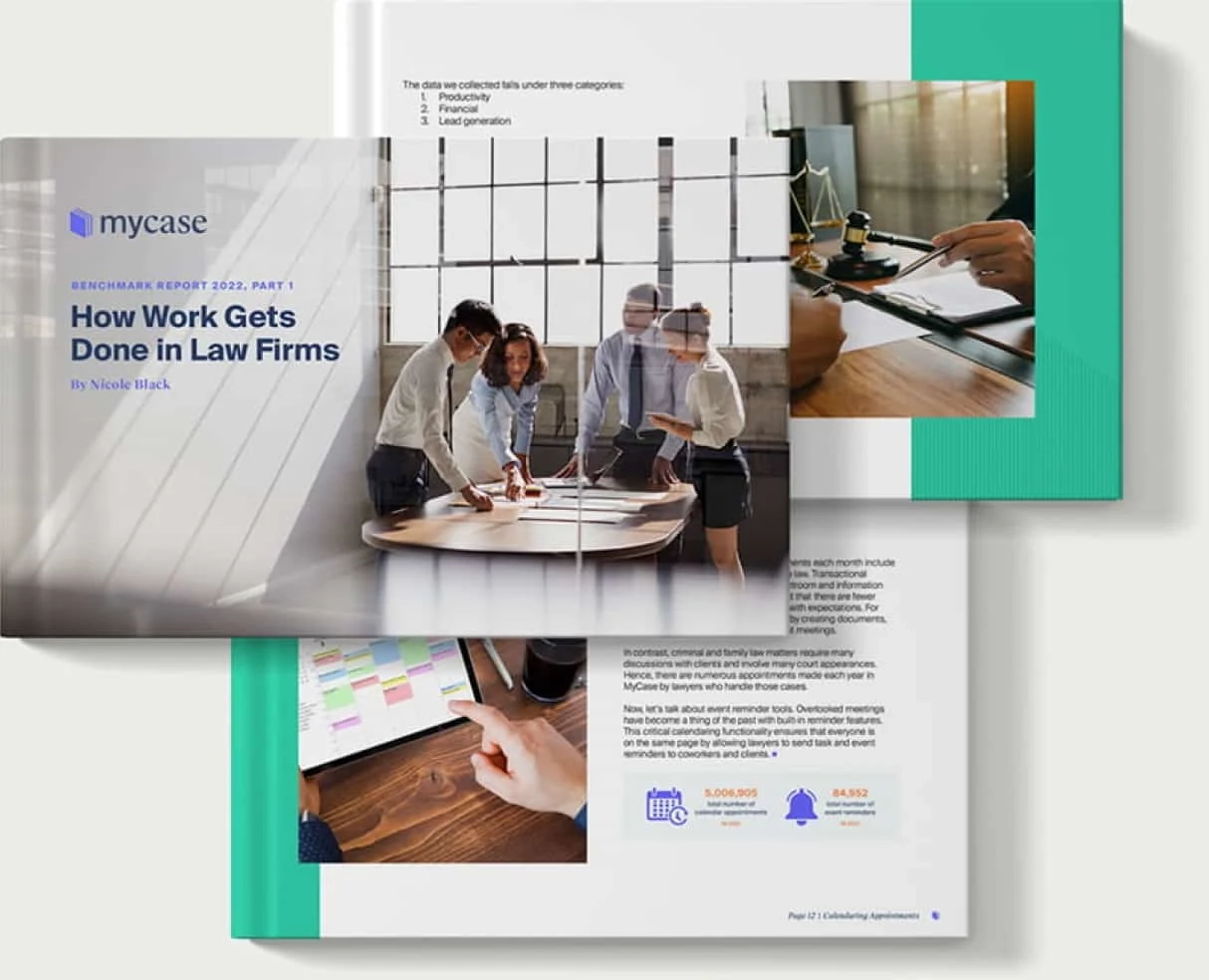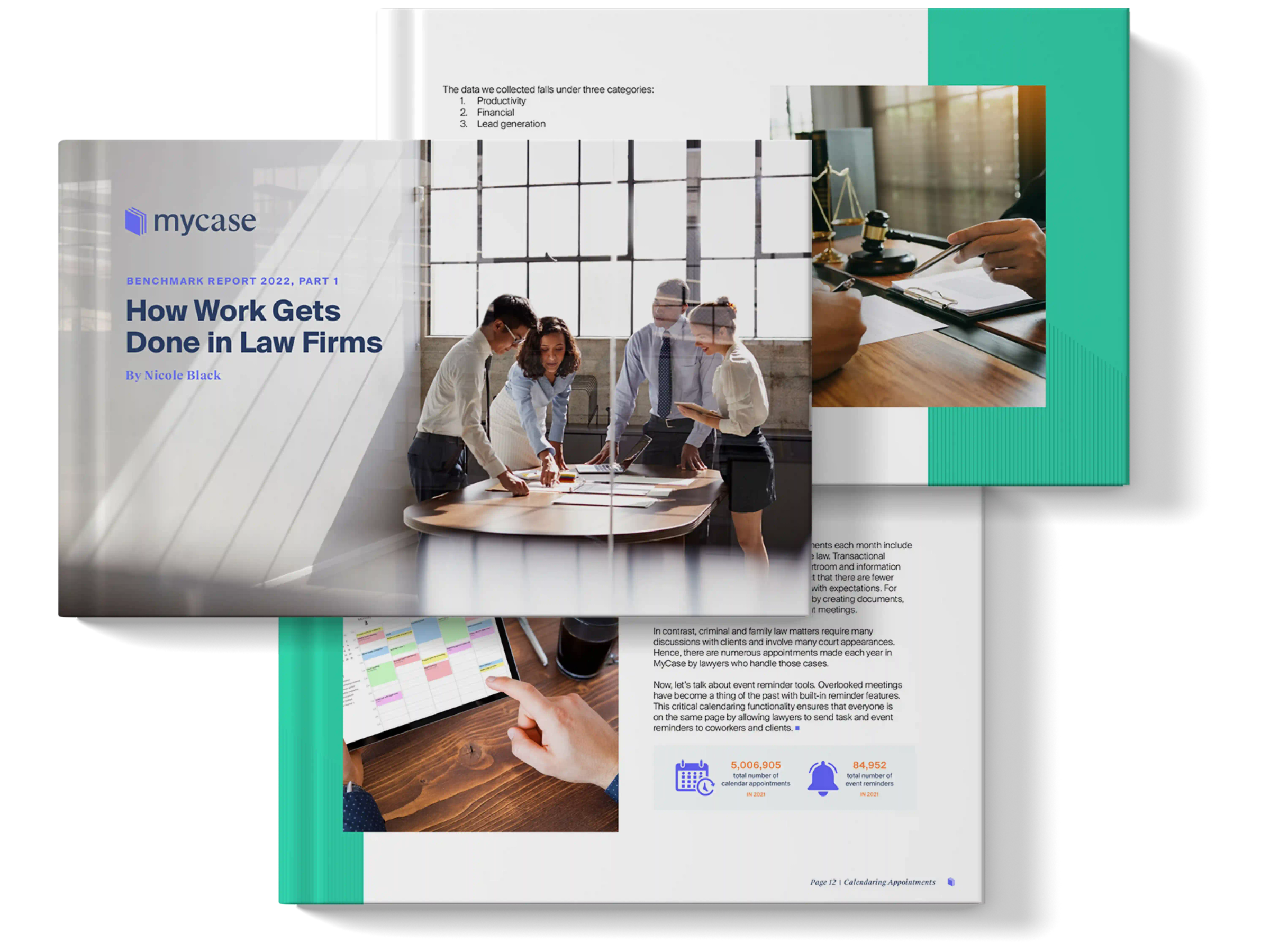Take a Look Inside
The practice of law is unique, and the demands of representing your clients can be never ending. There's always something to be done between court dates, non-stop phone calls, and ever-pressing deadlines. As a result, it's not always easy to keep up, and you can feel overwhelmed sometimes.
While you can't remove stress from your practice, you can mitigate it. One of the best ways is to change how work gets done by incorporating new technology and processes into your firm. When the technology used by your firm increases efficiency, you can spend time focusing on clients, providing them with the best representation possible.

About the author

The MyCase Team







